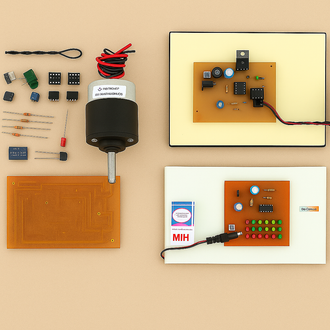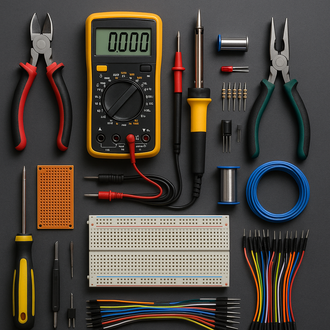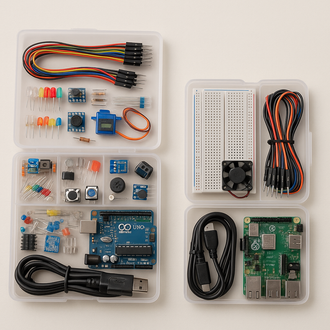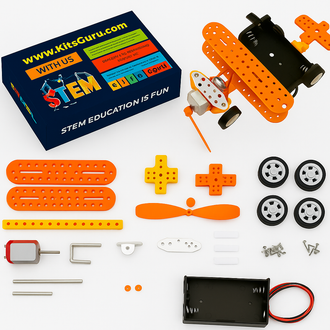
How to Convert Your Normal Cycle into an Electric Cycle: Step-by-Step DIY Guide
- 06 Oct, 2025
Picture making your regular bike into a smooth, strong electric ride! You can easily turn your regular bike into an e-bike with an electric cycle kit. This will save you time, money, and effort. This guide will show you everything you need to know to make your own electric bike, from picking the right parts to putting them together step by step.
Why change a regular bike into an electric bike?
Electric bikes are becoming more and more popular in India because fuel prices are going up, people want to use eco-friendly ways to get around, and people are becoming more interested in sustainable transportation. There are many benefits to converting your cycle:
- Affordable: Much cheaper than getting a new e-bike.
- Good for the environment: no emissions and a smaller carbon footprint.
- You can choose the motor power, range, and battery capacity that works best for you.
- A fun project to do yourself: Get hands-on experience with how electric drive systems work.
Things You Will Need: Parts of an electric conversion kit
Most e cycle kits come with all the parts you need to make your bike electric. The main parts are:
- The hub motor is the most important part of your conversion. It goes on the front or back wheel. Depending on speed and torque, you can look into different kinds of hub motor kits.
- Controller: Controls the flow of electricity between the battery and the motor.
- Throttle: Lets you control how fast you go by twisting or pushing a button.
- Battery Pack: Gives the motor power. Pick a capacity based on the range you want.
- The display unit shows the speed, distance, and battery level.
- Wiring Harness and Connectors: These are used to safely and effectively connect all the parts.
How to Change Your Cycle in Steps
Step 1: Pick the Right Kit for Conversion
Choose a kit cycle based on how you plan to use it: for city commuting, mountain rides, or long-distance travel. In India, kits with 250W to 500W of power are usually legal on the road and good for everyday use.
Step 2: Get your bike ready
Check the frame and tires of your bike before you put them on. Make sure it can handle the extra weight of the battery and motor. Make sure to clean all of the mounting points well.
Step 3: Put the Hub Motor Wheel on
The ebike motor kit comes with a new front or rear wheel that you can use to replace your old one. Make sure it is perfectly aligned and the axle nuts are tight. Check that the direction of rotation matches the wiring diagram that came with it.
Step 4: Put the Controller on
Put the controller close to the frame, usually under the seat or on the downtube. It should be put in a safe place where it won't get wet. Most kits come with either Velcro straps or mounting brackets.
Step 5: Link the Display and Throttle
Put the throttle on the handlebar so that your thumb or wrist can easily reach it. For better visibility, put the display unit close to the center of the handlebar. Follow the color-coded wiring to connect both units to the controller.
Step 6: Put the battery in place
Use the included bracket or rack mount to attach the battery to the frame. Make sure it is stable and balanced. Make sure it is securely connected to the controller, and check all terminals twice.
Step 7: Managing the wires
Use zip ties to neatly tie up all the cords. To keep wheels and pedals from getting stuck, don't leave any wires loose or hanging.
Step 8: Do a test run
Start the system and see if the motor responds to the throttle. Check the display to make sure the readings are correct. Before you tighten the screws all the way, take a short test ride to make sure everything works smoothly.
Picking the Right Motor and Battery
The kind of ebike motor and battery you use has a big effect on how well your electric bike works:
- 250W Motor: Good for riding in the city and on moderate hills.
- 500W Motor: Gives you more torque for hilly areas.
- Choose a 36V or 48V battery based on how powerful your motor is and how far you want to go.
- Lithium-ion: light, long-lasting, and efficient.
How to Do Better
- Keep the right amount of air in your tires so that your rides are smooth and use less gas.
- To make the battery last longer, charge it before it drops below 20%.
- Make sure that electrical connectors are clean and dry.
- Make sure to regularly oil the chain and other moving parts.
- If you can, use regenerative braking to help the battery recover.
India's Laws and Safety Issues
E-bikes with motors that are less than 250W and can only go 25 km/h are considered non-motorized vehicles in India. This means you don't need a license or registration. Always follow these safety rules:
- Wear a helmet that has been approved for use.
- Use headlights and reflectors to see at night.
- Before using the brakes and throttle every day, make sure they work well.
In conclusion
One of the most fun DIY projects for bike lovers is turning your regular bike into an electric one. You can have a smarter, greener, and more efficient way to get to work every day with the right electric cycle kit.
Check out the different e cycle kits and hub motor kits on KitsGuru to find the one that works best for your project. Then, get started on your electric cycling journey!
















